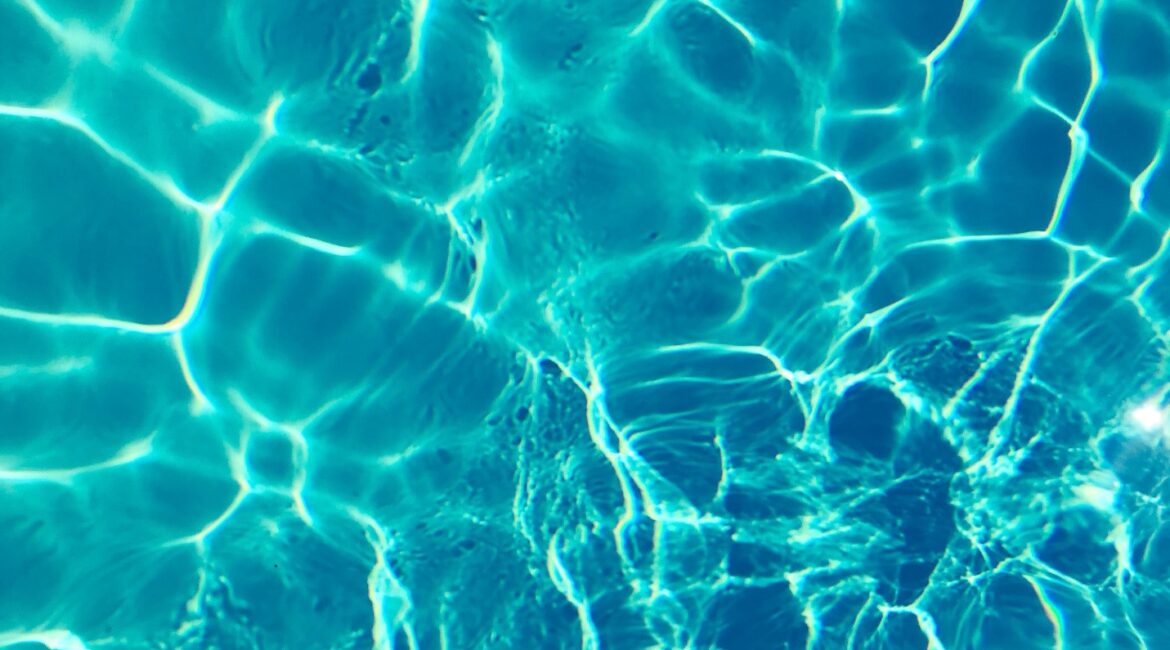What Is Pool Shock?
Pool shock is both a process and the product used to carry out that process. Shocking your pool means adding pool water chemicals to its water to improve its composition or allow chlorine or non-chlorine alternatives to work appropriately.
Shocking a pool is done to raise the pool’s free chlorine level to a level where bacteria and algae are eliminated. Free chlorine is chlorine that has not neutralized the harmful germs and bacteria in your pool yet.

Reasons You Should Use Pool Shock in Your Swimming Pool
Pools are shocked for a few different reasons, but typically, you should shock your pool when:
- Algae begins to grow in your swimming pool.
- To prevent and remove bacteria like giardia, E. coli, and Cryptosporidium, which can damage pool water and be harmful to swimmers.
- Your swimming pool’s free chlorine levels measure zero.
- Your pool’s combined chlorine level has risen to an unacceptable level, or chloramines are too high, and you need to remove the chloramines created when free available chlorine in your pool combines with contaminants like dirt, rain, bodily fluids, and pollution.
Benefits of Using Chlorine Pool Shock
- Chlorine pool shock is a quick-release, fast-acting formula.
- Pool shock will oxidize living and nonliving organic contaminants in your pool’s water and purify the water.
- Pool shock removes ammonia and chloramines.
- Pool shock can quickly kill algae, germs, and bacteria to sanitize your swimming pool’s water.
Types of Pool Shock
There are several products swimming pool owners can use to shock their swimming pool.
Calcium Hypochlorite for Pool Shock
Also referred to as cal hypo, calcium hypochlorite is one of the least costly chemicals and most convenient ways to shock your pool.
- Calcium hypochlorite is usually sold in granular form.
- Cal hypo must be used after dusk.
- It must be dissolved before you can add it to your swimming pool.
- After using Cal Hypo to shock your swimming pool, you have to let at least eight hours pass before you can safely swim.
- Cal Hypo will add about 0.8 ppm of calcium to your water for every FC added.
The pool experts at Lone Star Pool Services recommend POOL Breeze® Granular 68 in a 25-pound bucket, which is available for affordable purchase directly from Lone Star Pool Services. POOL Breeze® Granular 68 is a multipurpose and highly effective calcium hypochlorite product that is easy to use, convenient, and won’t over-stabilize your swimming pool. Granular 68 has an available chlorine percentage of 68% and will sanitize and shock treat your pool and prevent algae.
Dichlor for Pool Shock
Dichlor is short for sodium dichloro-s-triazinetrione or dichloroisocyanuric acid. Dichlor is the easiest and safest chemical for shocking your pool.
- Dichlor doesn’t have to be dissolved ahead of time.
- Dichlor must be used after dusk.
- It can be used for both shock treatments and regular chlorine doses.
- Dichlor contains between 50% and 60% chlorine.
- It can be used for both regular chlorine doses and shock treatments.
- After using dichlor to shock your swimming pool, you have to wait eight hours until it is safe to swim.
- Using dichlor will add 0.9 ppm of cyanuric acid for every ppm of additional FC.
Lithium Hypochlorite for Pool Shock
Using lithium hypochlorite can be a more costly option for shocking your pool.
- Unlike cal hypo, lithium hypochlorite won’t raise your pool water’s calcium level.
- Lithium hypochlorite dissolves much more quickly than other options.
- It must be used after dusk.
- It doesn’t need to be dissolved beforehand and can be added to your pool directly.
- Commercial versions of lithium hypochlorite contain 35% chlorine.
- Lithium hypochlorite is toxic to aquatic life.
- After using lithium hypochlorite to shock your pool, you must wait at least eight hours before you can safely swim.
Potassium Peroxymonosulfate for Pool Shock
Potassium peroxymonosulfate is a less costly, non-chlorine shock.
- Potassium peroxymonosulfate can be added directly to your pool’s water at any time of day or night.
- After shocking your swimming pool with potassium peroxymonosulfate, you only have to wait about 15 to 20 minutes before it is safe to swim.
- Potassium peroxymonosulfate does not function as an algaecide.
How to Properly Shock Your Swimming Pool
Shocking your swimming pool is pretty straightforward; however, following specific preparation steps is important before shocking your pool. Poorly prepared pool water can make the pool shock ineffective so that the underlying issue won’t be addressed.
Clean Your Pool
If there are leaves, dirt, or other debris on your pool’s floor or surface, it will waste your chlorine’s killing power as it attacks these organic materials instead of the issue you are trying to correct.

Lower Your Pool's pH
Your swimming pool’s pH level should be lowered to 7.2 before shocking. At high pH levels, chlorine becomes sluggish and doesn’t perform at peak levels. If the pH is 8.0, less than half of the chlorine added to your pool’s water will convert to hypochlorous acid, the killing form of chlorine.

Read the Label on Your Pool Shock
There are many types of pool shock, and each may have different dosages or usage instructions. Some types of pool shock may require you to dissolve the granules before adding them to your pool to prevent damage to your pool surfaces.
Add the Pool Shock to Your Pool
Following manufacturer directions, distribute the pool shock throughout your pool’s surface while the pool system runs. Ensure you follow appropriate safety measures or hire a pool cleaning company.

Brush Your Pool
Brushing your pool will help distribute the chemicals from the pool shock and remove the layer of dust and film on your pool surfaces that can interfere with the pool shock treatment.

